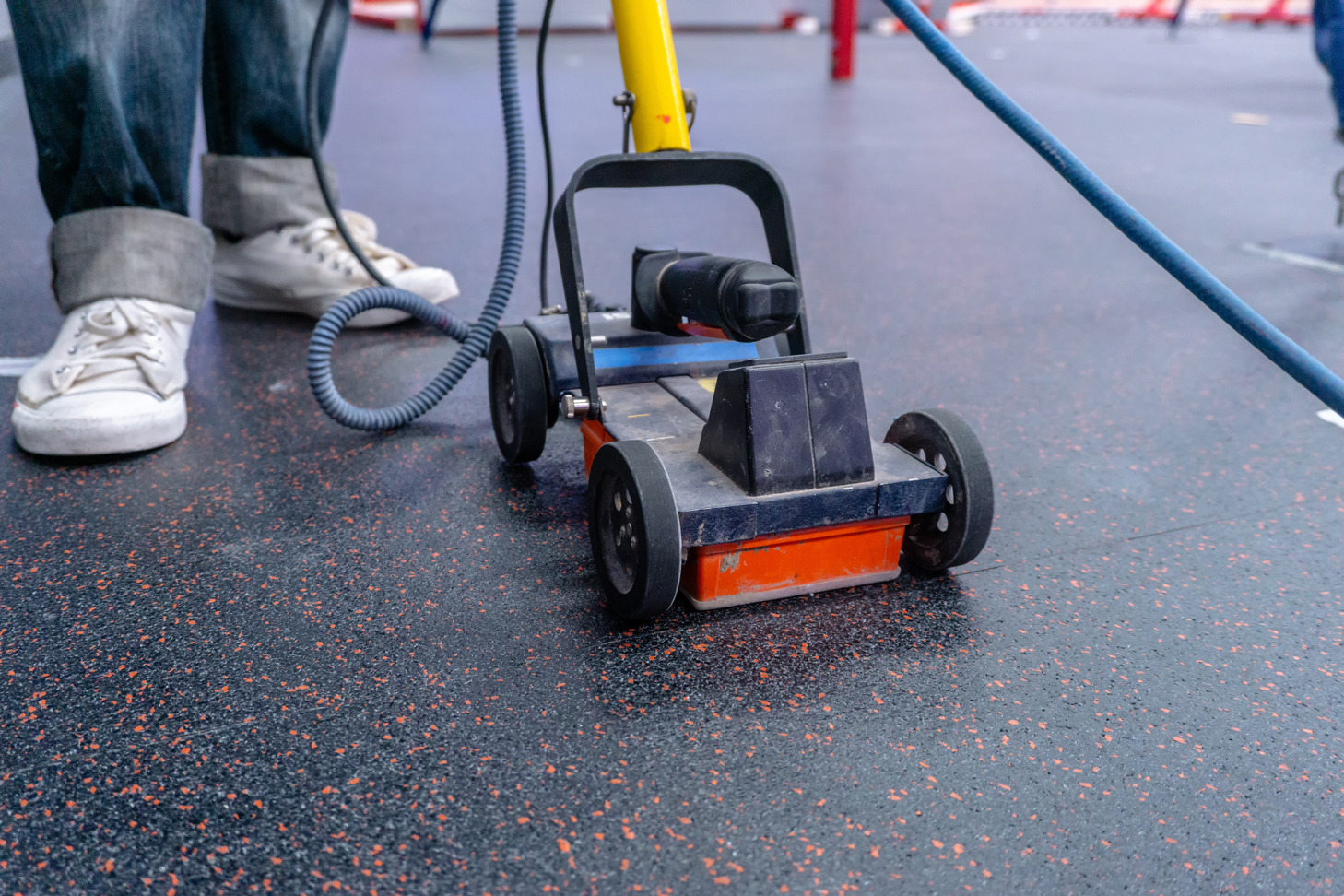Boost Your Job with RainierGPR Concrete Scanning Solutions
Boost Your Job with RainierGPR Concrete Scanning Solutions
Blog Article
Discovering the Secret Advantages of Concrete Scanning in Building Projects
In the world of contemporary building and construction techniques, the use of concrete scanning innovation has arised as a crucial device for making sure project efficiency and architectural integrity. From improving safety actions to precisely identifying utilities concealed under the surface area, the benefits of concrete scanning are complex. RainierGPR Concrete Scanning.
Improved Safety And Security Steps
Utilizing innovative concrete scanning modern technology boosts precaution on building sites by providing accurate detection of possible threats hidden beneath the surface area. This innovation makes it possible for building and construction teams to identify rebar, channels, post-tension cords, and other blockages prior to excavation or boring, significantly lowering the risk of accidents. By pinpointing these aspects precisely, employees can stay clear of harmful crucial structural parts, hence protecting against injuries, delays, and pricey repair services.
In addition, concrete scanning plays a vital function in making sure the honesty of existing frameworks during improvements or growths. By finding weaknesses, gaps, or damage within concrete aspects, designers can attend to these issues proactively, enhancing the total security and longevity of the building. This proactive technique not only mitigates the threat of architectural failures yet additionally decreases the capacity for accidents triggered by unanticipated structural shortages.
Basically, the application of concrete scanning innovation works as a proactive precaution that safeguards both building employees and the architectural integrity of buildings, eventually adding to the total success and effectiveness of construction tasks. - RainierGPR Concrete Scanning
Accurate Detection of Energies
Concrete scanning modern technology helps with accurate identification of below ground utilities, improving construction site safety and security and effectiveness. Accurate discovery of energies is vital in building and construction jobs to avoid pricey problems, task hold-ups, and most importantly, guarantee the security of workers and the public. By utilizing sophisticated scanning technologies such as ground-penetrating radar (GPR) and electro-magnetic induction, construction teams can draw up the location of buried pipes, cable televisions, and various other energies with high levels of accuracy.

Time and Expense Performance

Concrete scanning modern technology makes it possible for building and construction groups to precisely situate rebar, post-tension cable televisions, and other ingrained items within concrete frameworks. This exact information helps in avoiding pricey mistakes such as unintended damages to crucial components during exploration, reducing, or coring activities. In addition, by identifying potential risks ahead of time, the need for pricey repair services or rework because of problems can be minimized, leading to cost financial savings for the project.

Furthermore, the capacity to swiftly and accurately spot energies beneath the surface without creating any type of damage not just conserves time but also stops costly disruptions to existing facilities. Generally, the time and expense effectiveness benefits of concrete scanning make it an important tool for enhancing building job management and implementation.
Preservation of Structural Integrity
Preserving the structural honesty of buildings and infrastructure is critical in guaranteeing lasting security and safety. Concrete scanning plays an important duty in this conservation procedure by enabling building and construction experts to determine prospective risks to the structural integrity of a structure or infrastructure prior to they escalate right into significant concerns. Via the usage of advanced scanning modern technologies such as ground-penetrating radar (GPR) and electro-magnetic induction, building and construction teams can non-invasively evaluate the problem of concrete structures, situate rebar, post-tension cables, and other embedded components, and identify any kind of voids, cracks, or degeneration within the concrete.
Improved Task Planning
In order to ensure the successful implementation of construction projects, thorough interest to detail and complete planning are vital components that stem from a detailed understanding of the structural problems determined with concrete scanning. Boosted job planning, promoted by concrete scanning, enables building and construction teams to preemptively deal with prospective obstacles, allot resources much more effectively, and develop sensible timelines. By properly identifying the place of rebar, post-tension cords, and other embedded items within concrete structures, project supervisors can establish extra accurate building strategies that decrease the danger of pricey mistakes or hold-ups. Furthermore, the data acquired from concrete scanning enables stakeholders to make informed choices pertaining to architectural modifications, renovations, or growths, causing smoother task shifts and improved overall project outcomes. Ultimately, integrating concrete scanning right into the job planning phase boosts sychronisation amongst employee, promotes proactive analytical, and adds to the effective delivery of building projects within budget and routine restraints.
Conclusion
Finally, concrete scanning provides many benefits in construction tasks. By improving security procedures, accurately identifying utilities, boosting time and cost efficiency, preserving architectural honesty, and helping in job preparation, concrete scanning proves to be an important device for successful task execution. Its capacity to minimize dangers, increase effectiveness, Read Full Report and make sure task integrity makes it a crucial possession for construction professionals.
In the world of modern building techniques, the utilization of concrete scanning technology has actually emerged as a critical device for making sure project effectiveness and architectural honesty.Concrete scanning technology enables building and construction groups to precisely locate rebar, post-tension cords, and other embedded items within concrete structures. With the use of innovative scanning technologies such as ground-penetrating radar (GPR) and electro-magnetic induction, building and construction teams can non-invasively analyze the problem of concrete frameworks, locate rebar, post-tension cables, and other ingrained elements, and identify any kind of gaps, cracks, or degeneration within the concrete.
In order anonymous to ensure the successful implementation of construction tasks, careful attention to information and comprehensive preparation are important components that stem from a comprehensive understanding you can check here of the architectural problems recognized via concrete scanning. Inevitably, incorporating concrete scanning into the job planning stage improves coordination among group participants, fosters proactive analytic, and contributes to the effective delivery of construction projects within spending plan and timetable restraints.
Report this page